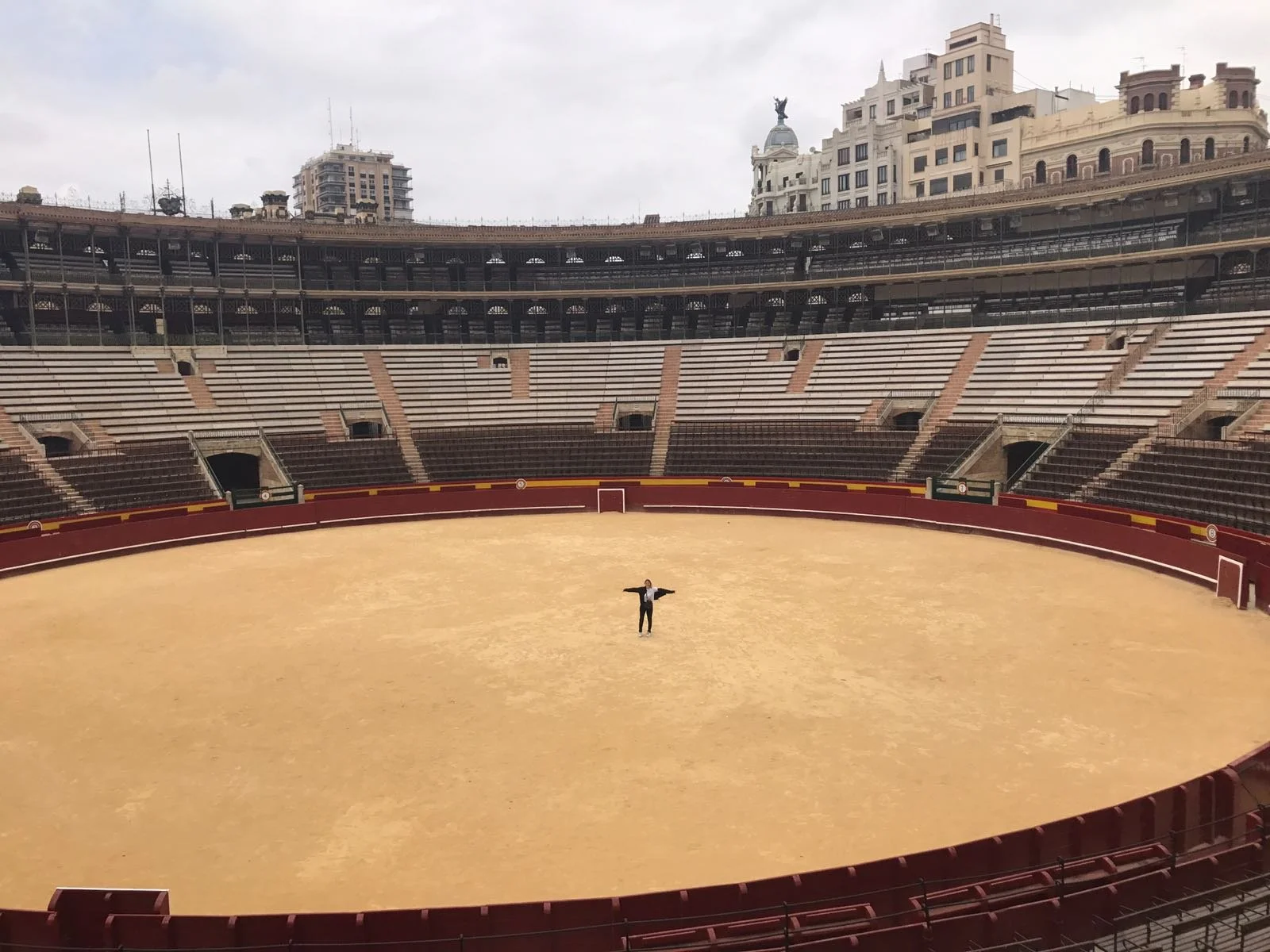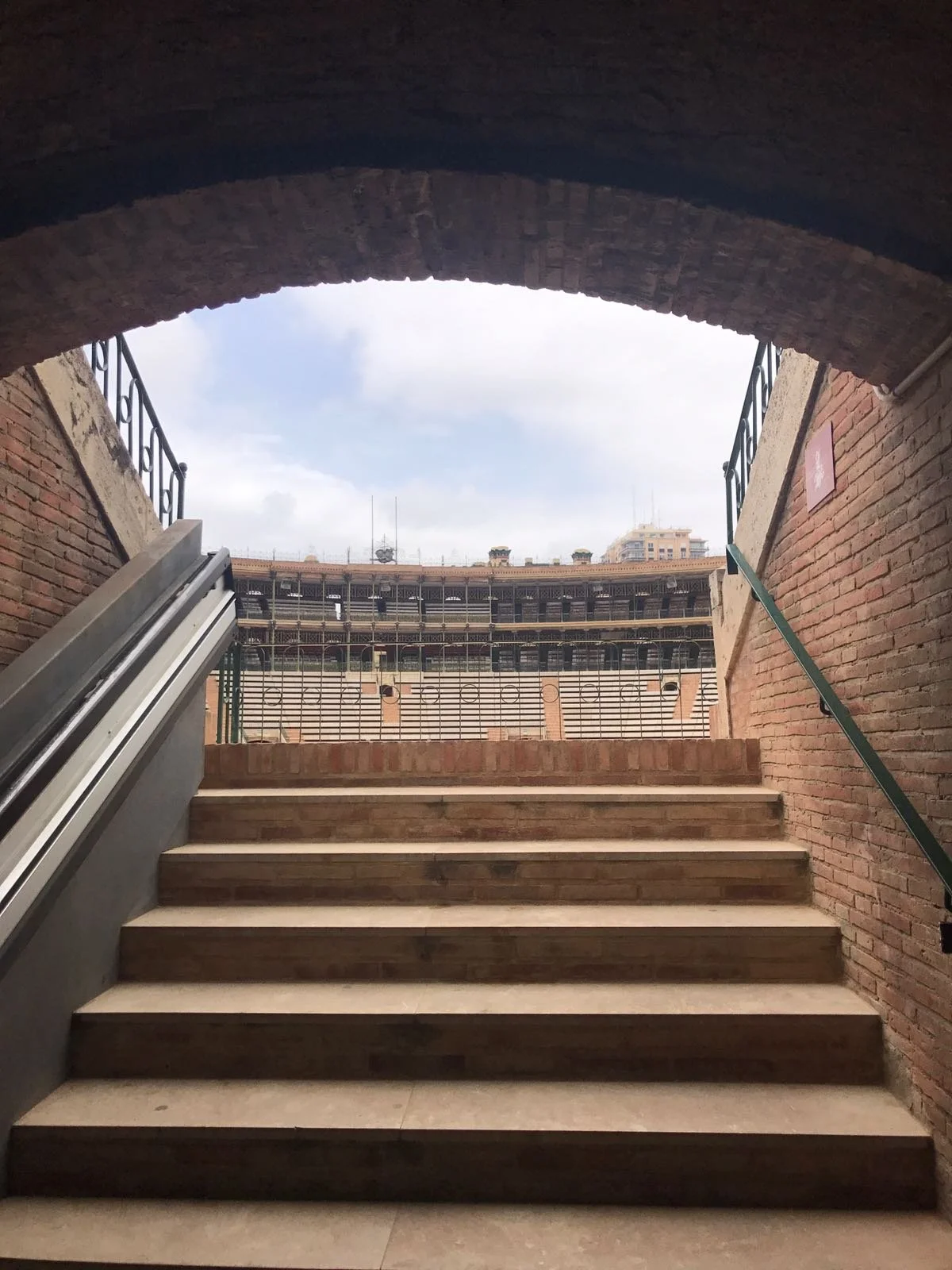What Do You Really Know About Bullfighting? Exploring the Iconic Arenas of Seville & Valencia 🇪🇸
One of the most jaw-dropping places we visited in Spain wasn’t a palace, a beach, or a famous tapas bar—it was the bullrings. We had a vague idea of what bullfighting was about, but we weren’t exactly well-informed. Still, when we were in Valencia, visiting the bullring was on our list—and it turned out to be one of the most surprising experiences of the trip.
📍 Valencia’s Plaza de Toros: A Roman Echo in Modern Spain
Just steps away from the central train station in Valencia stands Plaza de Toros de Valencia, a neoclassical arena built in the 1850s. Inspired by Roman amphitheaters, it can hold up to 13,000 spectators, and the architecture alone is worth the visit—even if you’re not attending a bullfight.
We paid just €1 to enter (yes, really!) and found ourselves in the middle of the ring, with golden sand beneath our feet and the eerie quiet of an empty coliseum. The place felt timeless. For a moment, we were gladiators of a forgotten world. There were just a few of us wandering around—four or five curious souls soaking it all in.
As you can see below, I couldn’t resist stepping onto the sand myself. Miss Matadora, reporting for duty.
(Insert image caption: "Stepping into history—literally.")
That said, there wasn’t much information available inside, so while we were awed by the space, we didn’t gain a deep understanding of bullfighting just yet.
📍 Seville’s Real Maestranza: A Living, Breathing Tradition
Then came Seville. And that’s where things got real.
The Plaza de Toros de la Real Maestranza de Caballería de Sevilla (yes, it’s a mouthful) is one of the oldest and most prestigious bullrings in Spain. Built in the 18th century and located in the heart of the city, it’s not only a historic site but also an active arena. Yes, bullfights still take place here—regularly.
We entered with a guided tour and audioguide, which walked us through both the arena and its museum, filled with matador outfits, paintings, and stories spanning centuries. The experience was beautifully curated, and honestly, far more intense than we expected.
We saw actual bull heads mounted on the walls. At first, my friend Serra asked, “Are these real?” I said, “Of course not.” But then we saw the event schedule—and realized bullfighting hadn’t faded into history. There were fight dates listed through 2018, 2019… all the way to this week.
When we asked the staff if it still happens, they calmly said, “Yes. Just yesterday.”
We were stunned. We had assumed it was a symbolic or cultural reenactment—but no, these are full-fledged real events, with real bulls, and yes… real consequences.
🩸 The Shocking Reality Behind the Show
As we made our way through the museum, we learned just how structured these events are. Each bullfight includes 6 bulls, and each is killed as part of the performance. The event isn’t just about the matador—it involves a team:
A matador
A picador (on horseback)
A banderillero
Each with specific roles and rituals.
There are three teams per event, each fighting two bulls. Afterwards, the bulls are typically taken to local butchers. The tradition is still very much alive—and divisive.
And yes, it’s so current you can still smell the horses in the stables behind the arena.
🎬 Pop Culture, Bullrings, and Beyond
Seville’s bullring has appeared in films such as Knight and Day (2010) starring Tom Cruise and Cameron Diaz.
The Plaza de Toros de Ronda, not far from Seville, is one of the oldest in Spain and inspired Ernest Hemingway’s Death in the Afternoon.
Some bullrings, like Barcelona’s, no longer host bullfights but have been converted into malls or cultural centers.
✨ Final Thoughts: Should You Visit a Bullring?
Whether or not you support bullfighting, visiting a bullring is one of the most unique and thought-provoking cultural experiences you can have in Spain. These arenas are architectural marvels and powerful windows into a tradition that still sparks passionate debate.
Would we have watched a bullfight? Honestly, probably yes—just for the cultural immersion and to witness something we only knew from movies and books.
If you find yourself in Valencia, Seville, Ronda, or Madrid, take the time to visit a bullring. Even if you're unsure how you feel about it, seeing it up close changes everything.
And aesthetically? Let’s just say—they don’t build places like this anymore.
Have you ever visited a bullring? Would you watch a bullfight? Share your thoughts in the comments—or tag us at @studio.vesper if you go.


